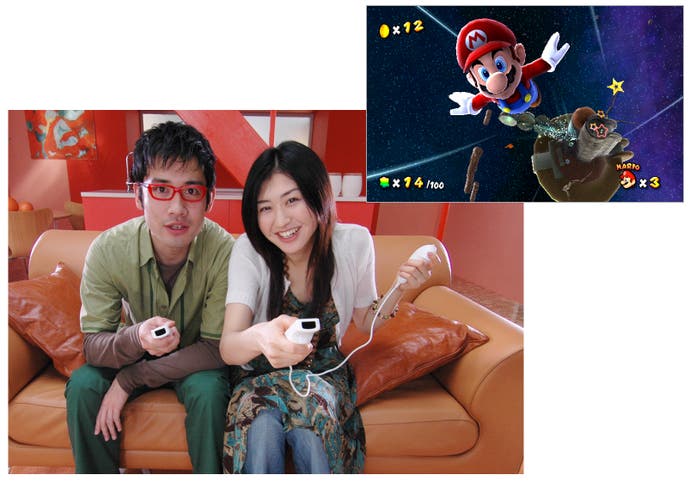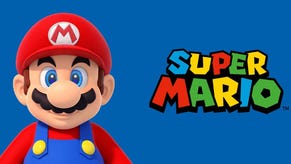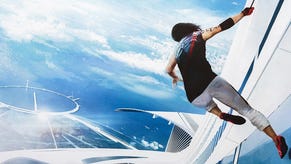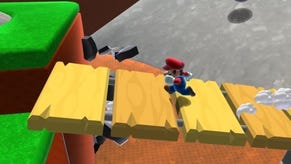Super Mario Galaxy
Star treatment.
Were you to have dissected my brain on the flight to E3 this year, you would have found many things. I suspect you would have discovered first of all where the air marshal was sitting. Having patiently explained that you were the unwitting protagonist of a preview introduction being written several months later, you might then have peeled back my scalp, levered open my skull and fingered your way past the layers of neuroses, the section dedicated to obscure '90s pop trivia ("aha, so it was Deep Blue Something who wrote Breakfast At Tiffany's"), and then arrived in whichever lobe played host to my main fear about Super Mario Galaxy: that it would, like many of the DS launch titles, struggle to feel like much more than the novel first steps of a toddler in an earthquake.
What you would have discovered on the return flight, however, would have been quite different. Because at some point during E3, I had a real "thunk" moment, and realised that what we had weren't toddling dev-feet struggling for purchase, but firm-footed dev-feet, freeing up the hands. The DS, though less diverse in its control schemes than its new family member, has already taught people a few lessons about what works in games that mix pointer-control and classic game design. Most relevantly here, Metroid Prime: Hunters taught them that traditional movement and pointer control can be combined rather well, and showed them how. With that bedrock of knowledge, Super Mario Galaxy manages to be simultaneously extremely familiar and intuitive - fundamentally sure-footed if you like - leaving the Nintendo team Shigeru Miyamoto's waving around in Japan to concentrate on what happens when you start waving Mario around.
Shown off again shortly after Nintendo's press conference in London on Friday, it's still lovely, and since I didn't get to write about it last time and there's only so much I can write about the experience of touching Tim Henman's leg, it felt high time for a recap. The demo's the same, but, well, I didn't have to punch anybody's grandmother to get near it, unlike poor Mathew did in Los Angeles, so I was able to take my time and soak it up.
As the above hoped to illustrate, Mario Galaxy comes very naturally precisely because both you and Nintendo know what Mario's doing right from the off. Using the Nunchuk for analogue movement, the Wii remote for jumping, triple-jumping and butt-slamming, and Nintendo's AI programmers for preventing the automatic camera going doolally, the real fledgling steps here are taken with the arms, with pointer usage and wiggle motions for activating objects in the world the key new elements - and a real sense that the developers want you to use the controller for fiddling with their world rather than struggling for control.

"Activating objects" is a remarkably sterile description of how this unexplored ceiling - hung with stars - is charted by remote motions, mind you. Having started prancing around in traditional style, the unorthodox comes slowly but whimsically. You point a reticule at the screen and use it to jingle some bells hanging above the starting point - an action that manifests some musical notes leading up an incline, collection of which plays a little tune and pops a 1up mushroom out of a nearby bush. Later Mario grabs hold of a sticky, springy sort of space-plant, which bucks like a playground bronco as you wiggle the Nunchuk analogue. But by hovering the reticule over it and tightening the trigger, you grab hold of Mario and are able to draw him back like a rubber band, before releasing him to spin off into the eternal night, on to whatever the next sequence Nintendo's dreamt up might be.
You can still leap between platforms, but gravity is localised to whichever space rock, asteroid, floating pirate ship or larger spherical world you're anchored to, so in the case of smaller objects you can often walk up a wall rather than jumping to reach a ledge. Land on a spiralling walkway and your platform gene prompts you to wait, the expectation being that it will start to gradually rotate and you'll have to time your movement to match the assumed gravity; instead, you can simply walk along it, the perspective angling round with you as it spirals. Where you're not reaching into the game with the Wii remote to straighten Mario's platforming bowtie, you're being shown something you expect and conquering it in ways as alien to the Mushroom Kingdoms of old as brain surgery is to transatlantic flights.
It's a heady mix of old and new and new-old, and it's consistent in this. Visually it has a sort of fuzzy felt sheen to it, which is to do with the particular way the game is lit - as though Mario's being struck by the light of stars on all sides. Again, it distinguishes Galaxy without sacrificing the trademarks.

The demo version, while short, certainly enthrals, and those uncluttered by grabbing hands waiting in the queue behind - those who get to explore it several times - can take different paths to several different bosses. There's a giant spider, whose web straddles a sort of galactic ring that Mario can run around the inside of, and whose behind needs to be sprung against using the Wii remote for more rubber band action. There's a giant robotic nasty whose comeuppance is a matter of wiggling the Wii remote on flying bullets and then leading them around to its weak spot. And there's a lava-bound sort of crustacean, spitting lava balls and the occasional fruity ovoid, which needs to be wiggled at to return it to sender. Vanquishing bosses presents Mario with stars. And like Mario 64 and even Mario Sunshine before it, there's still something unmistakably satisfying about their collection.
But as I said to the lady commanding the demo pod, and as you would have discovered if you'd ripped open my head in May, the most satisfying thing about Mario Galaxy, in its present form, is that the Nintendo's progression from DS to Wii has already helped put developers in the right frame of mind to take advantage of its innovation - and on evidence like this it's helped Nintendo get off to a good star. It may not be a launch title, but Super Mario Galaxy ought to launch Mario back to the pantheon of greats, and I can't wait to see where else the journey takes him.
Super Mario Galaxy is due out exclusively on Nintendo Wii in 2007.









